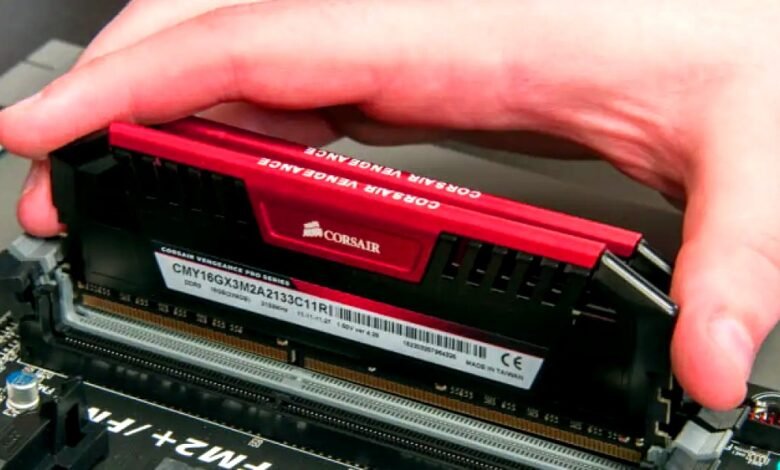Enabling XMP to Run Your RAM at Full Speed

EXPLORE THE CONTENTS
Introduction
A brief explanation of XMP
When it comes to optimizing your computer’s performance, understanding the significance of the eXtreme Memory Profile (XMP) is crucial. By overclocking your RAM beyond the limits of its standard specifications, you can unleash its full potential thanks to Intel’s XMP technology.
The importance of running RAM at full speed
Running your RAM at its maximum speed isn’t just for tech enthusiasts; it can significantly impact your system’s overall performance. Whether you’re a gamer seeking smoother gameplay or a professional handling resource-intensive tasks, enabling XMP can make a noticeable difference.
Understanding XMP
What is XMP?
XMP is a feature embedded in your RAM modules that facilitates overclocking. It provides predefined profiles, making it easier for users to optimize their RAM performance without delving into complex manual settings.
How XMP enhances RAM performance
By adjusting memory settings to optimal levels, XMP ensures that your RAM operates at its highest potential. This translates to improved data access speeds and overall system responsiveness.
Benefits of Running RAM at Full Speed
Improved system responsiveness
Enabling XMP leads to a noticeable improvement in system responsiveness. Applications load faster, and multitasking becomes smoother, creating a more seamless user experience.
Enhanced gaming and multitasking experience
Gamers, in particular, will appreciate the enhanced performance. With XMP, games load quicker, and frame rates become more consistent, resulting in a more enjoyable gaming experience. Multitasking also becomes more efficient.
Checking Compatibility
Verifying motherboard support for XMP
Before diving into XMP, it’s essential to ensure that your motherboard supports this feature. Consult your motherboard’s manual or visit the manufacturer’s website for compatibility information.
RAM compatibility with XMP
Not all RAM modules are XMP-compatible. Check the specifications of your RAM or contact the manufacturer for confirmation. Ensuring compatibility is crucial for successful XMP activation.
Enabling XMP in BIOS
Accessing BIOS settings
To embark on the journey of unleashing your RAM’s full potential through XMP, the first step is accessing your computer’s BIOS settings. BIOS, short for Basic Input/Output System, is where you can adjust fundamental system settings, and enabling XMP falls under this category.
Accessing the BIOS typically involves restarting your computer and pressing a specific key during the startup process. Common keys for entering the BIOS include DEL, F2, F10, or ESC, depending on your motherboard. Refer to your motherboard’s manual or look for on-screen prompts during startup to determine the correct key.
Locating XMP option
Once you’ve successfully entered the BIOS, it’s time to navigate to the memory settings. These settings can often be found under a tab labeled “Advanced” or “Advanced Settings.” Within the memory settings, you’ll encounter the XMP option, which may be named differently depending on your motherboard’s manufacturer.
Step-by-step guide on enabling XMP
Now, let’s break down the process of enabling XMP step by step:
- Navigate to Memory Settings: Look for a section within the BIOS labeled “Memory Settings,” “DRAM Configuration,” or something similar.
- Locate XMP Option: Within the Memory Settings section, search for the XMP option. Your motherboard manufacturer may list it as “XMP,” “Memory Profile,” or under a brand-specific name.
- Select Desired XMP Profile: Once you’ve found the XMP option, you’ll likely see different profiles listed (e.g., XMP Profile 1, XMP Profile 2). Select the profile that corresponds to the specifications of your RAM. Profiles are pre-configured settings optimized for different performance levels.
- Enable XMP: After selecting the appropriate XMP profile, there should be an option to enable it. Toggle the XMP setting to “Enabled.”
- Save Changes and Exit: In most BIOS setups, you’ll need to save your changes before exiting. Look for an option like “Save & Exit” or a similar prompt. Confirm your selection and the system will restart with the new XMP settings applied.
- Check for Stability: Once your system restarts, monitor its stability. Pay attention to any signs of instability, such as crashes or unexpected reboots. If issues arise, consider adjusting the XMP settings or consulting your motherboard’s support resources.
By following these steps, you’ll have successfully enabled XMP, optimizing your RAM for improved performance. Remember that the exact steps and terminology may vary slightly based on your motherboard model, so always refer to the user manual for accurate instructions.
Read More: 5 Best Ways to Fix Steam Overlay Not Working
Troubleshooting XMP Issues
Common problems and solutions
Some users may encounter issues after enabling XMP, such as system instability or crashes. Common problems include incompatible RAM modules or outdated BIOS firmware. Troubleshoot these issues by updating your BIOS and ensuring RAM compatibility.
Ensuring system stability
Stability is paramount when overclocking. Monitor your system for any signs of instability, such as crashes or overheating. If issues persist, consider adjusting the XMP settings or consulting with technical support.
Overclocking vs. XMP
Understanding the difference
While both overclocking and XMP involve pushing hardware beyond default specifications, XMP simplifies the process by providing predefined profiles. Overclocking, on the other hand, requires manual adjustments to achieve optimal performance.
Choosing the right option for your needs
If you’re a novice seeking a performance boost without delving into complex settings, XMP is the ideal choice. Advanced users may opt for manual overclocking for more precise control.
Impact on System Temperature
Addressing concerns about overheating
Some users express concerns about increased temperatures when overclocking. However, with XMP, the impact on system temperature is typically minimal. Ensure proper cooling and monitor temperatures to maintain system health.
Monitoring and managing temperatures
Use monitoring tools to keep an eye on your system’s temperature. If temperatures become a concern, adjust fan speeds or consider additional cooling solutions to maintain optimal operating conditions.
XMP Profiles Explained
Different XMP profiles are available.
XMP offers various profiles designed for different performance levels. Experiment with different profiles to find the one that best suits your requirements without compromising stability.
Selecting the optimal profile for your setup
Consider your system’s specifications and your performance goals when selecting an XMP profile. Testing different profiles allows you to find the perfect balance between performance and stability.
Real-world Examples
Testimonials from users who enabled XMP
To provide real-world context, let’s explore testimonials from users who have experienced the benefits of enabling XMP. Their experiences highlight the positive impact on gaming, productivity, and overall system responsiveness.
Before-and-after performance comparisons
Visualize the difference XMP can make by examining before-and-after performance comparisons. From faster application launches to reduced loading times, the improvements are tangible.
Future Developments in RAM Technology
Evolving trends in RAM
As technology advances, so does RAM. Explore the latest trends in RAM technology, such as increased capacities, faster speeds, and innovations that may impact XMP functionality.
Potential advancements related to XMP
Keep an eye on future developments that could further enhance XMP capabilities. Manufacturers may introduce new features or optimizations to push RAM performance even further.
Best Practices for RAM Maintenance
Regular updates and firmware checks
To ensure optimal performance, regularly check for BIOS updates and firmware upgrades for your RAM modules. Manufacturers may release updates to improve compatibility and address potential issues.
Optimizing RAM settings for longevity
While XMP boosts performance, it’s essential to strike a balance. Avoid extreme overclocking that could impact the longevity of your RAM. Optimize settings to achieve the desired performance without compromising the lifespan of your hardware.
Expert Recommendations
Advice from tech experts on maximizing RAM performance
Experts in the field share valuable advice on getting the most out of your RAM. Whether it’s optimizing settings, choosing the right XMP profile, or troubleshooting issues, their insights can guide you.
Community forums and discussions
Engage with the tech community through forums and discussions. Share your experiences, seek advice, and stay informed about the latest developments in RAM technology and XMP optimization.
Conclusion
Summarizing the key points
Enabling XMP is a straightforward yet powerful way to unlock your RAM’s full potential. The benefits are evident, from improved system responsiveness to enhanced gaming experiences.
Encouraging readers to unlock their RAM’s full potential
If you haven’t already, leap and enable XMP to experience a performance boost like never before. Unlocking your RAM’s full potential is a simple yet impactful step towards a smoother computing experience.
FAQs
Can enabling XMP void my warranty?
Enabling XMP typically doesn’t void your warranty. However, it’s essential to check your warranty terms and conditions, as some manufacturers may have specific guidelines.
What if my system becomes unstable after enabling XMP?
If your system becomes unstable after enabling XMP, troubleshoot the issue by updating your BIOS, ensuring RAM compatibility, and adjusting XMP settings if necessary.
Are there any risks associated with running RAM at full speed?
While running RAM at full speed with XMP is generally safe, it’s crucial to monitor system temperatures and stability. Proper cooling and responsible overclocking practices can mitigate potential risks.
How often should I check for BIOS updates?
Regularly check for BIOS updates, especially when experiencing compatibility issues or before enabling XMP. Manufacturers release updates to enhance compatibility and address potential issues.
Can XMP improve the performance of non-gaming applications?
Yes, XMP can improve the performance of non-gaming applications by providing faster data access and improved multitasking capabilities.







